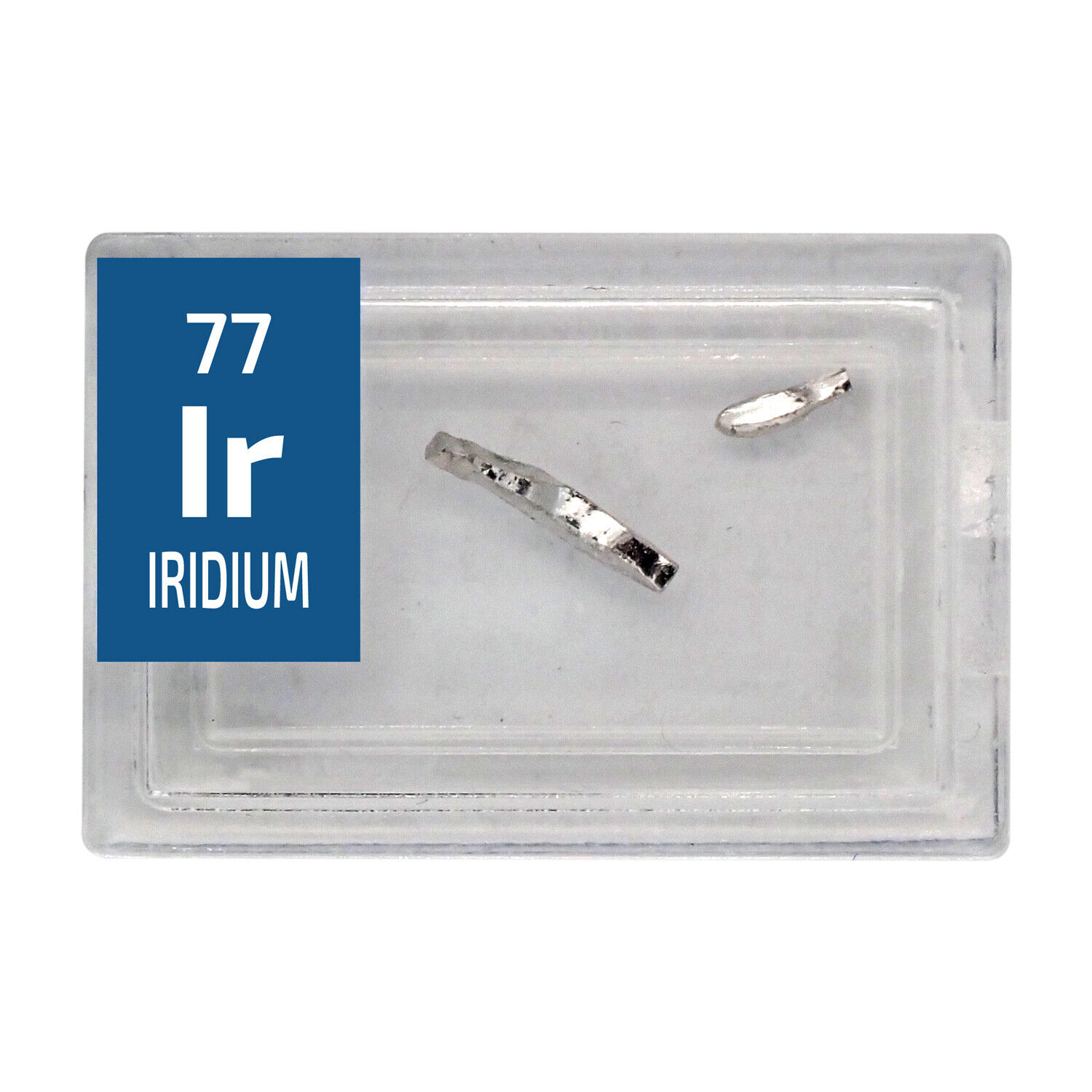
Iridium is a fascinating element that holds a unique place in the periodic table. With its atomic number 77 and symbol Ir, iridium is a dense, lustrous, and corrosion-resistant metal that has captured the curiosity of scientists and the imagination of the public. From its cosmic origins to its crucial role in various industrial and scientific applications, iridium boasts a rich and diverse array of properties and uses. In this article, we will delve into 11 intriguing facts about iridium, shedding light on its discovery, characteristics, and significance in different fields. So, let's embark on a journey to unravel the mysteries and marvels of this extraordinary element.
Key Takeaways:
- Iridium, a rare and colorful metal named after the Greek goddess Iris, is highly valued for its resistance to corrosion and high density. It plays a crucial role in various industrial applications, from high-temperature devices to cancer treatment.
- With its unique crystal structure and exceptional properties, iridium is used in electronics and the production of high-performance alloys, enhancing the strength and durability of materials. Its role in the Cretaceous-Paleogene extinction event has also captured widespread attention.
Iridium is a chemical element with the symbol Ir and atomic number 77.
Iridium is a dense, lustrous, silvery-white metal that is highly corrosion-resistant. It is the second-densest element and is the most corrosion-resistant metal, even at high temperatures. Iridium is a member of the platinum group of elements and is found in the Earth’s crust only in the combined state.
Iridium is the second-densest element and is the most corrosion-resistant metal, even at high temperatures.
With a density of 22.56 grams per cubic centimeter, iridium is the second-densest element, only slightly less dense than osmium. It is also the most corrosion-resistant metal, even at temperatures as high as 2000°C. These unique properties make iridium highly valuable in various industrial applications.
Iridium is named after the Greek goddess Iris, the personification of the rainbow, due to the colorful compounds it forms.
The name “iridium” is derived from the Greek word “iris,” which means rainbow. This is a reference to the striking and diverse colors of its compounds. Iridium compounds are known for their vibrant and varied colors, which is fitting for a metal named after the goddess of the rainbow.
Iridium is primarily used in devices that require high-temperature durability, corrosion resistance, and hardness.
Due to its exceptional properties, iridium is utilized in a variety of industrial applications. It is commonly used in spark plugs, crucibles for high-temperature processes, electrical contacts, and as a hardening agent for platinum. Additionally, iridium is used in various scientific and medical equipment due to its resistance to corrosion and high melting point.
Iridium is one of the rarest elements in the Earth’s crust.
While iridium is widely dispersed in low concentrations in the Earth’s crust, it is one of the rarest elements. It is typically found in platinum ores, and its abundance is approximately 0.001 ppm in the Earth’s crust. The rarity of iridium contributes to its high value and diverse industrial applications.
Iridium is a crucial component in the field of medicine, particularly in cancer treatment.
Due to its biocompatibility and resistance to corrosion, iridium is used in brachytherapy, a form of cancer treatment. Radioactive iridium-192 is utilized in brachytherapy to treat various forms of cancer, including prostate, breast, and cervical cancer. Its precise and targeted radiation makes it an invaluable tool in the fight against cancer.
Iridium is known for its role in the Cretaceous-Paleogene extinction event.
Iridium gained widespread attention due to its association with the Cretaceous-Paleogene (K-Pg) extinction event, which led to the extinction of non-avian dinosaurs. The presence of a distinct iridium layer in the geological boundary between the Cretaceous and Paleogene periods provided evidence for a catastrophic event, potentially an asteroid impact, that led to the mass extinction of various species on Earth.
Iridium has been used in the production of fountain pen nibs, providing a durable and corrosion-resistant writing instrument.
Due to its exceptional hardness and corrosion resistance, iridium has been utilized in the production of fountain pen nibs. The use of iridium in fountain pens ensures a durable and long-lasting writing instrument, as the iridium tip maintains its integrity even with frequent use, providing a smooth and consistent writing experience.
Iridium is a key component in the development of high-performance alloys, enhancing the strength and durability of materials.
By incorporating iridium into various alloys, the strength and durability of the resulting materials are significantly enhanced. Iridium-based alloys are used in aerospace components, high-temperature applications, and advanced engineering processes, contributing to the production of resilient and high-performance materials.
Iridium exhibits a unique crystal structure, known as a face-centered cubic lattice, contributing to its exceptional properties.
The crystal structure of iridium, characterized by a face-centered cubic lattice, is a key factor in its remarkable properties. This structure allows for the dense packing of atoms, contributing to its high density and exceptional hardness. The unique arrangement of atoms in iridium’s crystal lattice plays a crucial role in its physical attributes.
Iridium plays a significant role in the field of electronics, particularly in the production of high-temperature and high-frequency applications.
With its exceptional heat resistance and electrical conductivity, iridium is utilized in various electronic components for high-temperature and high-frequency applications. It is employed in the production of electrical contacts, spark plugs, and radio frequency devices, where its resilience and conductivity are essential for reliable performance in demanding environments.
Conclusion
With its fascinating properties and wide-ranging applications, iridium is truly a remarkable element. From its discovery to its modern-day uses, iridium continues to captivate scientists and enthusiasts alike. As one of the rarest elements on Earth, its significance in various fields, including industry, medicine, and technology, cannot be overstated. The enduring allure of iridium lies in its exceptional durability, resistance to corrosion, and unique role in catalyzing chemical reactions. As research and technological advancements progress, the potential for iridium to contribute to new innovations and breakthroughs remains boundless. Its remarkable characteristics and diverse applications make iridium a compelling subject for further exploration and study.
And here are the FAQs related to the title:
html
FAQs
What are the main uses of iridium?
Iridium is primarily used in the production of high-performance spark plugs, as well as in various industrial applications, such as in the manufacturing of crucibles and electrodes for the production of chemicals.
Is iridium a rare element?
Yes, iridium is considered one of the rarest elements on Earth, occurring at very low concentrations in the Earth’s crust and often found in association with platinum and other platinum-group metals.
What makes iridium valuable in scientific research?
Iridium’s exceptional resistance to corrosion and its ability to withstand high temperatures make it invaluable in scientific research, particularly in the fields of chemistry, materials science, and catalysis.
How is iridium used in the field of medicine?
Iridium isotopes are utilized in brachytherapy, a form of cancer treatment, where small radioactive implants containing iridium-192 are placed in or near the tumor to deliver targeted radiation therapy.
What are some unique properties of iridium?
Iridium exhibits remarkable hardness, a high melting point, and excellent resistance to corrosion, making it an ideal material for applications requiring durability and stability under extreme conditions.
Iridium's fascinating properties make it a valuable element in various industries. From its corrosion-resistant qualities to its role in cancer treatment, iridium continues to captivate scientists and researchers. Exploring the depths of this rare metal's characteristics reveals its significance in shaping our world. For those seeking adventure beyond the periodic table, consider delving into the world of outdoor exploration with the help of cutting-edge technology designed to enhance your hunting experience.
Was this page helpful?
Our commitment to delivering trustworthy and engaging content is at the heart of what we do. Each fact on our site is contributed by real users like you, bringing a wealth of diverse insights and information. To ensure the highest standards of accuracy and reliability, our dedicated editors meticulously review each submission. This process guarantees that the facts we share are not only fascinating but also credible. Trust in our commitment to quality and authenticity as you explore and learn with us.


